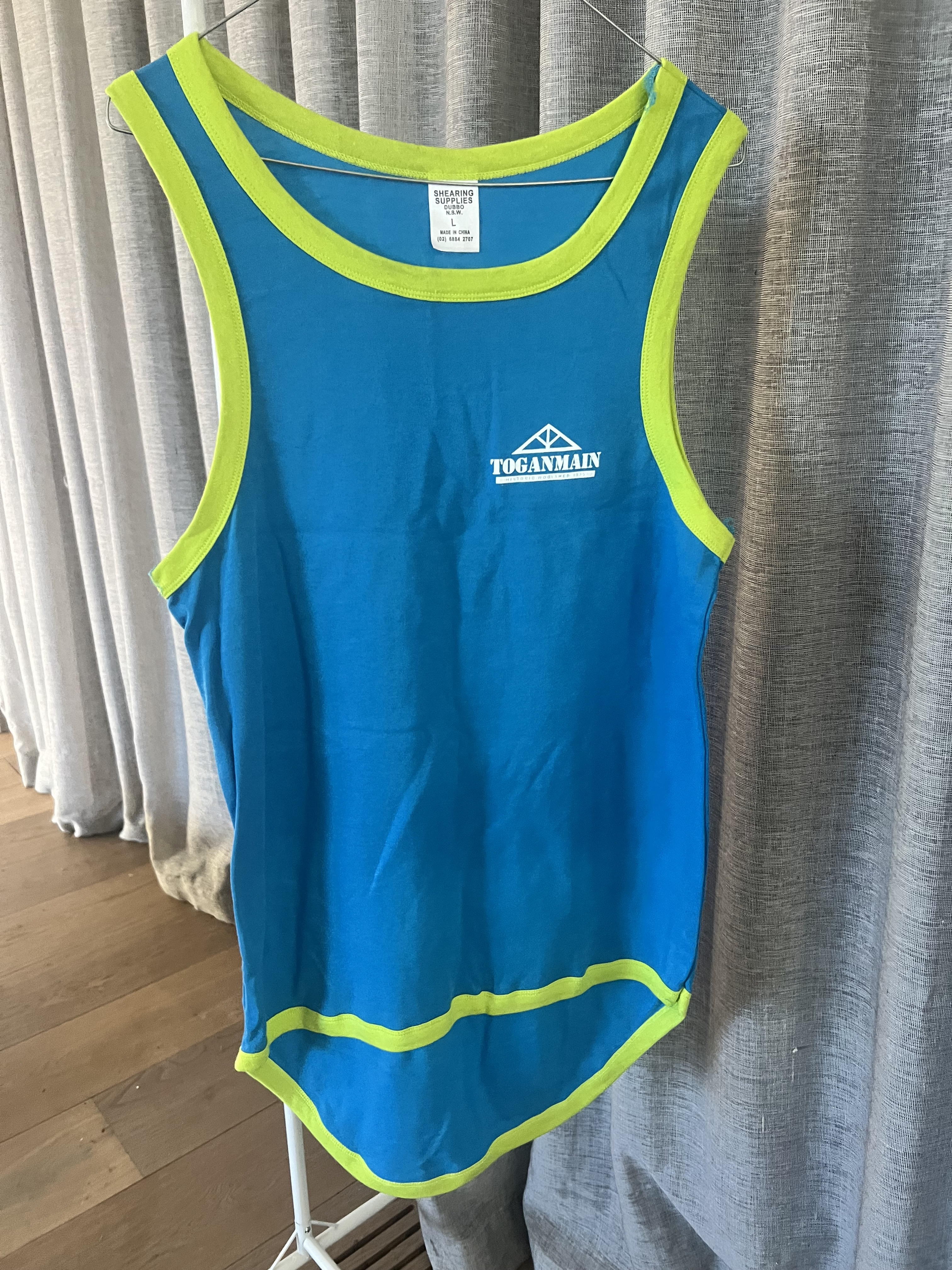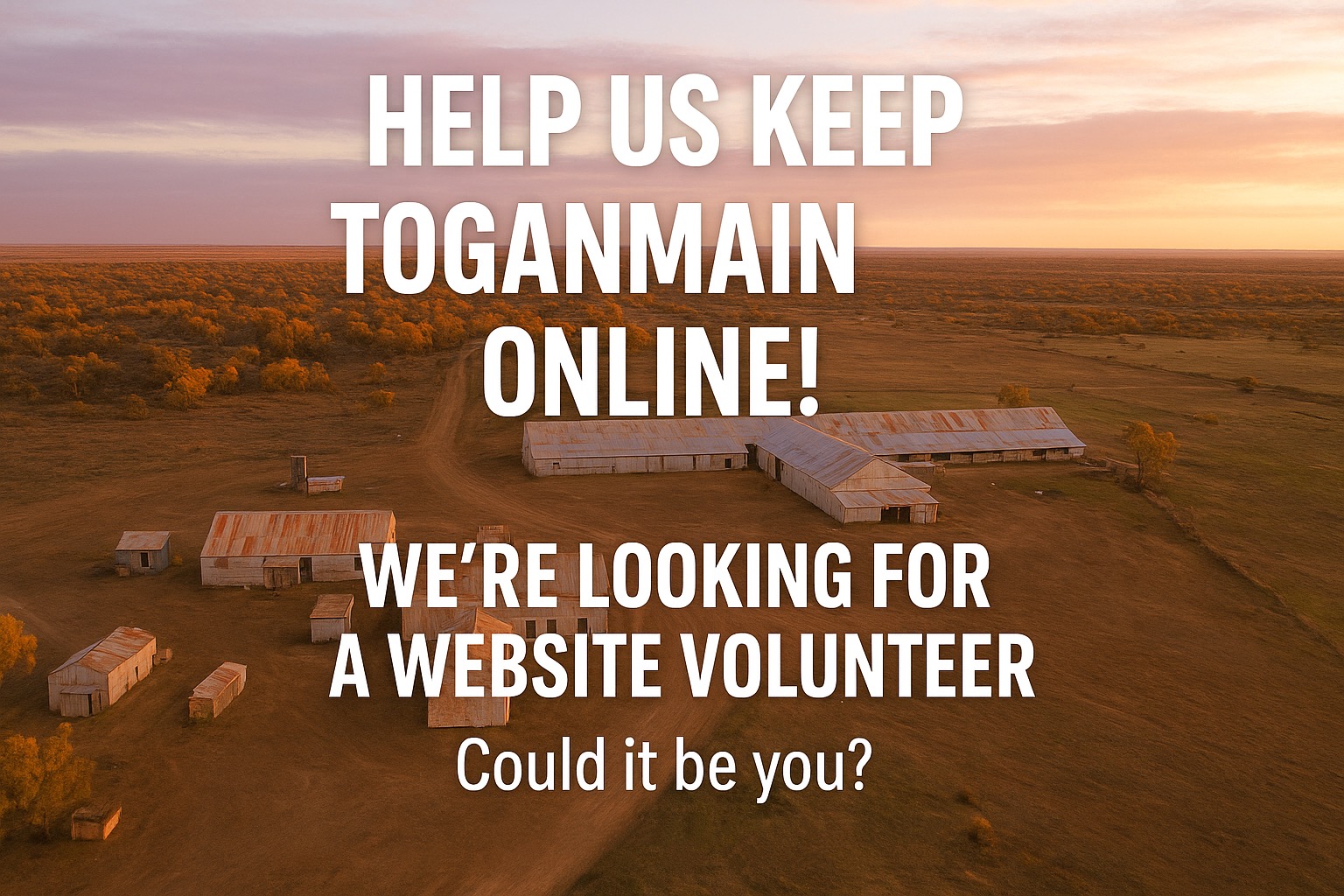Welcome to Toganmain Woolshed Precinct
Toganmain Woolshed Precinct Incorporated — Annual General Meeting
Toganmain Woolshed Precinct Incorporated will hold its Annual General Meeting on Wednesday, 26 November, at 6:30 pm at the Darlington Point Sports Club.
All volunteers, supporters, and interested community members are warmly invited to attend.
This meeting provides an opportunity to hear about the progress of the Toganmain Woolshed restoration, future plans for the precinct, and ways to get involved.
Important documents for this AGM include:
- 2025 AGM Agenda - Full meeting schedule and items for discussion
- 2024 AGM Minutes - Record of last year's meeting including the Chairman's Address
- Community Information Sheet - Plain language explanation of the proposed change to a Company Limited by Guarantee structure
- Special Resolution - The formal resolution regarding the legal structure change that members will vote on
All documents are available on the AGM documents page via the link above.
For further information, please contact the committee via our usual channels.
Open Days - March 2026
We’re excited to announce that bookings are now open for our next Toganmain Woolshed Open Days on 28 & 29 March 2026.
Back in August, more than 600 people came through our doors to enjoy the atmosphere and experience the history of our 150-year-old woolshed. The response was overwhelming, and we know many missed out.
So plan ahead, don’t miss this opportunity, and make sure you’re here in March to see it for yourself.
🔨 Calling Builders & Restoration Specialists 🔨
We’re looking for building companies or experienced builders willing to quote on restoration work for our heritage project.
The job involves major restumping of the two main wings of the Toganmain Woolshed - a significant structure with deep historical value. The work can be done in stages, and we’re open to discussing timeframes and logistics.
If you’re interested - or know someone who might be - please get in touch. We’d love to hear from builders who respect the importance of heritage work and are up for the challenge.
Online Shop Goodies
We've got a bunch of Shearers Singlets for sale in our store. We only have size "L" but more sizes are coming. Grab one now and be ready for summer!



Available now - Toganmain Woolshed: Then and Now — not to mention all sorts of other goodies! Click the button above to check it out.
Toganmain Stories
Do you have a personal story about Toganmain? Did you, a family member or a friend work there? We'd love to about hear it!
Please get in touch with us via our dedicated storytelling email address and we'll get back to you and make sure your tale becomes part of our collection.
Toganmain on the Tele
We've been covered by ABC Landline twice now. If you haven't seen the original feature about Toganmain that was broadcast on ABC's Landline program last July click the button below to check it out.
Below that is a link to the 29th June episode with lots of updates and coverage of our 1150th Celebration weekend.
Volunteering at Toganmain
The ongoing work at Toganmain Woolshed Precinct is mostly of a highly specialised nature. There may also be general working bees down the track.
To help out we first need to have all volunteers registered. To do so, if you haven't already, click the button below and complete our Volunteer Registration form.
Keep Up to Date...
Join our mailing list.
If you are planning to be in the area it is sometimes possible to arrange a private tour, depending on the availabilty of volunteer guides. Click the button above for details and to request a tour.

Looking for a Website Buddy
After our fantastic Open Days last weekend, I’d love to find someone to help me look after the Toganmain Woolshed Precinct website. I’ve been building and running it, and I enjoy it — but a bit of backup would be great so we’re ready for the future.
- ✅ Confident with computers
- ✅ Know (or willing to learn) how websites/hosting work
- ✅ Bonus if you've used Joomla
- ✅ Have some time to give
I’ll show you the ropes — you don’t need to know it all now. If you’re logical, keen to learn, and want to support the project, I’d love to hear from you.
👉 Email me at ian@toganmain.org.au if you’re interested.
Toganmain: A Legacy of Riverina Wool
Nestled between Darlington Point and Carrathool along the Murrumbidgee River, Toganmain Station was a key player in the Riverina's wool industry. Established by Sir Alexander Macleay and expanded by the Robertson family from 1867, it boasted 167,000 acres and significant river frontage. In its prime, the station's massive 75 by 25 metre woolshed, equipped with 110 blade stands and later Wolseley machines, was renowned for its high-quality wool. Toganmain's prosperity mirrored the wool boom of the early 20th century but waned with the advent of synthetic fibres and drought. Today, it remains a symbol of Australia's rich pastoral history.
Even today the woolshed conjures up memories of the great pastoral holdings which occupied Murrumbidgee River frontage from Darlington Point to Hay. The vision for the site is an immersive curated museum that will use recorded oral shearers' stories, written accounts and interpretative signage, to bring to life Australia's vital pastoral history in an environment which stimulates all the senses.
2024 Page Images: Phil Duval

























